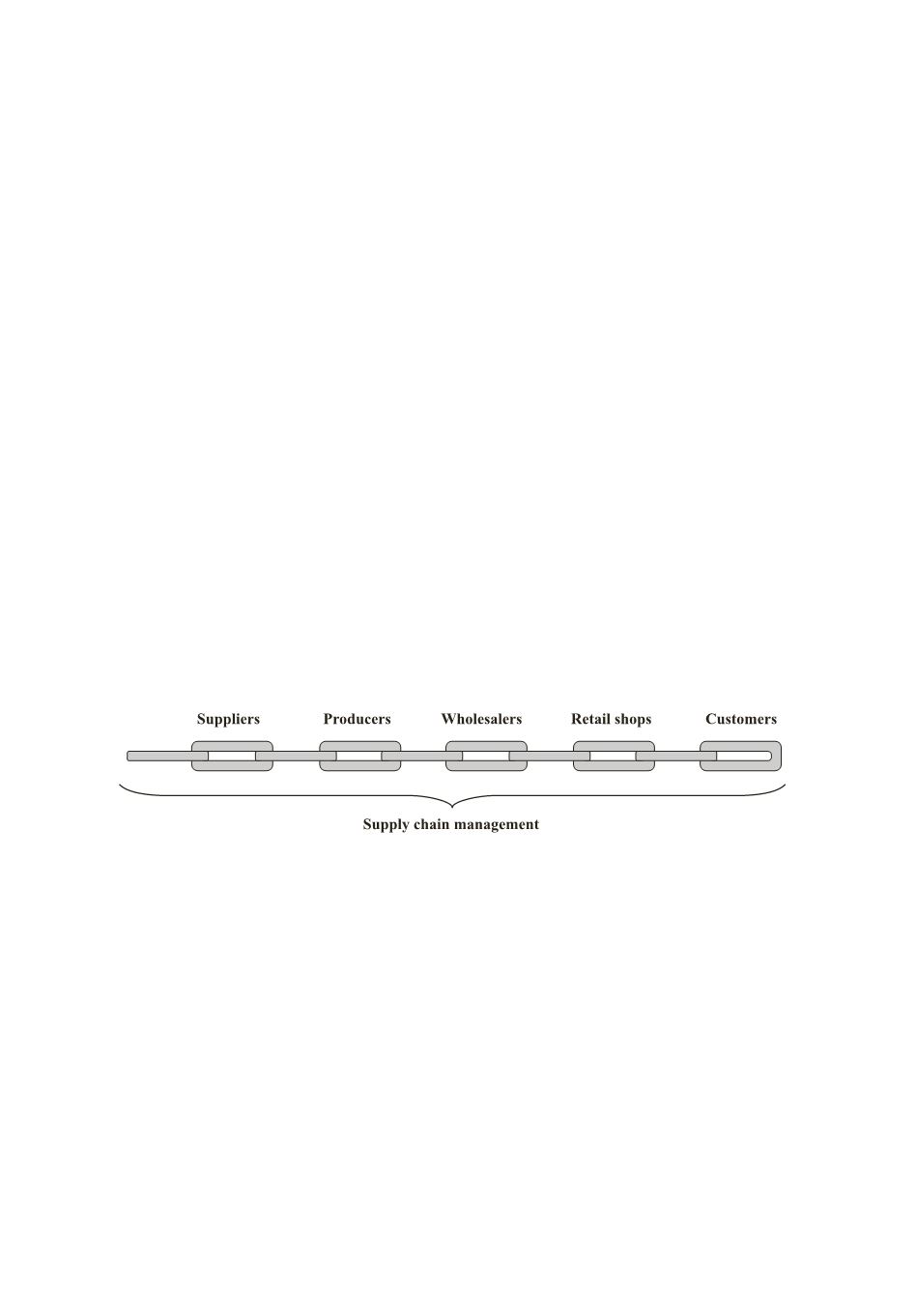

10
supply chain (suppliers, manufacturers, distributors, dealers and customers)
are all involved in the decision.
All supply chain flows can stream in both directions, and interconnection between
non-adjacent levels of the supply chain is not ruled out. Decision and information flows
can flow at one point across a large number of subjects or even the entire supply chain.
1.2 Supply chain management
According to the Council of Supply Chain Management Professionals “Supply
chain management encompasses the planning and management of all activities involved
in sourcing and procurement, conversion and all logistics management activities.
Importantly, it also includes coordination and collaboration with channel partners,
which can be suppliers, intermediaries, third party service providers, and customers.
In essence, supply chain management integrates supply and demand management
within and across companies.” [17]. Supply chain management (SCM) contains
logistics management, which is defined as “the process of planning, implementing, and
controlling the efficient, effective flow and storage of goods (materials, semi-products,
finished products), services, and related information from point of origin to point of
consumption for the purpose of satisfying of customer requirements.” [17].
It is clear from the above stated definitions that today’s approach to logistics deals
with the entire supply chain management, i.e. a chain which starts with the initial raw
material suppliers, through producers, wholesalers, retail shops and finishes with the
final consumers (see Figure 1.3).
Figure 1.3 Integration of processes in a supply chain
The introduced approach is based on close cooperation or partnership among the
individual parts of the supply chains and the companies providing logistics services (for
example transportation or public storage). If this prerequisite is not fulfilled, some of
the participating parties of the supply chain can find out, often within a very short time,
that their position is less favourable than before.
Processes belonging to supply chain management can be divided into individual
activities that fall into the following management levels [41]:
• Strategic level – it consists of long-term decisions that affect many subjects in
the supply chain, for example: choosing suppliers and other supply chain links,
setting capacities, production cycles and geographic location of individual
supply chain links.
















